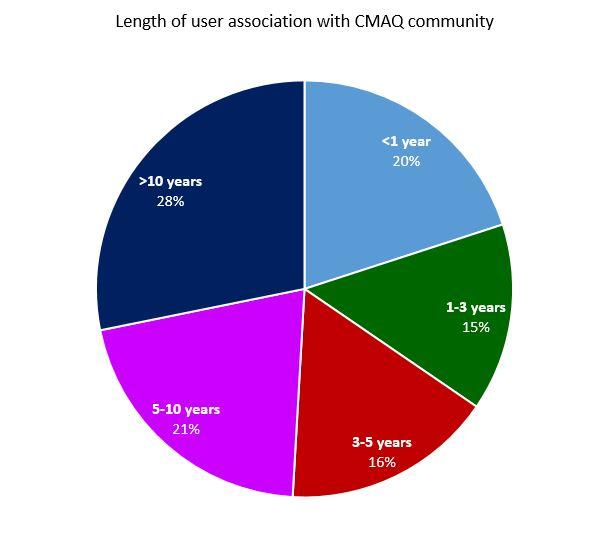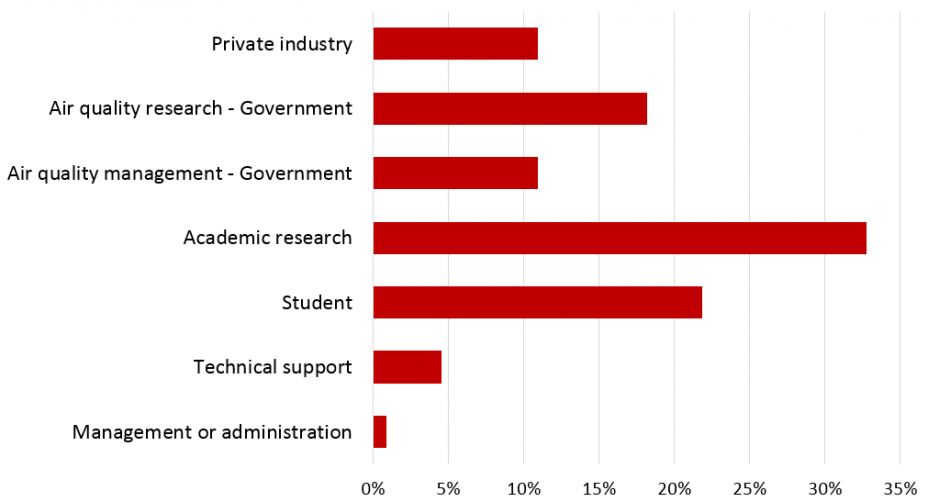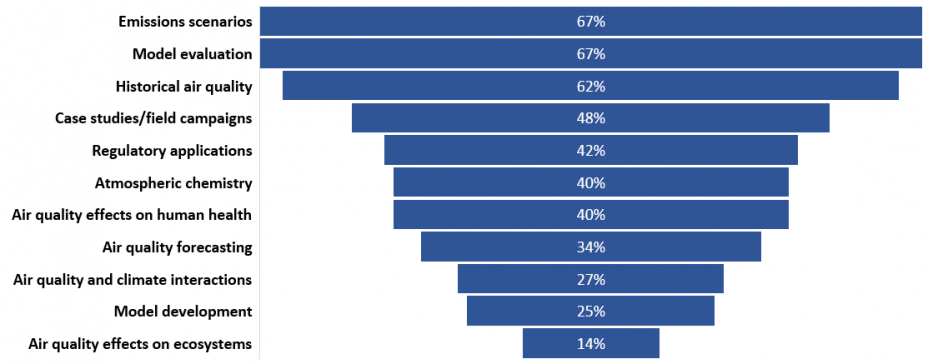CMAQ Community Survey Results
In 2016 and 2018, CMAQ users worldwide participated in a survey circulated by the University of North Carolina's Community Modeling and Analysis System (CMAS) center. The aggregated results allow us to better understand the needs and perspective of the CMAQ community in order to ensure that development is as dynamic and responsive to users as possible. The visualizations below illustrate some interesting user demographics and the role CMAQ plays for their work.
For complete results and analysis of the CMAQ User's Surveys, please download the PDF documents:
2016 and 2018 CMAQ User's Survey Results
The CMAQ team synthesized the results of the survey and created a list of short- and long-term priority action items. Priorities were determined based on the resources needed to complete the task, the frequency of the user concern or comment in the survey, and the overlap with other internal priorities.
The following are several specific items that the team was able to make progress on in time for the August 2019 release of CMAQv5.3.
- Continued utilization of GitHub for sharing latest developments.
- Increase in speed and scalability of model simulations compared to last release.
- Support for updated versions of CB6, RACM, and SAPRC07 mechanisms.
- Full integration of ISAM and STM into the base model and substantially improved run times for ISAM.
- Enhancements to the ICON and BCON processors and development of a tutorial for creating IC/BCs from Hemispheric CMAQ.
- New DESID model to allow scaling of emissions from different sources and regions within CMAQ.
- Improved deposition calculations and addition of new STAGE deposition module with output of land use specific deposition.
- Updated aerosol modules and updates to species definition files
- Improvements to log files to better organize information.
- Continued improvements to sample run and build scripts and documentation for building and running CMAQ.
- Improvements to postprocessing tools including AMET and VERDI.
- Improved User's Guide for v5.3 including new step-by-step tutorials.
- Increased availability of model input and output files.
- Improved user forum using Discourse.
Our future priorities will include (among others):
- Release of the CMAQ v5.3-DDM
- Exploration of cloud computing and containerization of CMAQ
- Improved accessibility of EPIC data to support bidirectional NH3 flux modeling
We encourage you to continue to stay involved with future development of the CMAQ system through participation in CMAS forums and events, future surveys, and through this website.
User Association with the CMAQ Community
 The CMAQ community continues to grow! Many people have been using the model since it was first released. However, there is a large user group that is new to the model system.
The CMAQ community continues to grow! Many people have been using the model since it was first released. However, there is a large user group that is new to the model system.
Primary Roles of CMAQ Users
 The occupational roles of CMAQ users widely vary. Students, government researchers, and private sector consultants represent some of the groups that use CMAQ.
The occupational roles of CMAQ users widely vary. Students, government researchers, and private sector consultants represent some of the groups that use CMAQ.
User Applications of CMAQ
 The CMAQ model system is used for a variety of applications. Users often take advantage of the model for multiple functions.
The CMAQ model system is used for a variety of applications. Users often take advantage of the model for multiple functions.
